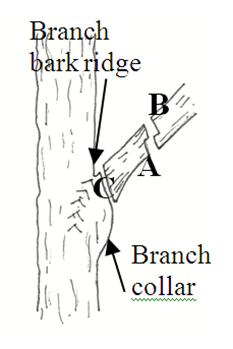Proper care is vital to the health and value of a tree. Improper tree care can weaken a tree and make it more likely to suffer from pests, disease, or decay. Unlike animals, plants have no active immune system, and may take many years to recover from an injury. By making the right decisions, you can help keep your trees healthy and safe.
Mulching
Proper mulching is an important preventative care component of good tree health and vigor. Mulch cools the soil, helps retain moisture, prevents bark injuries caused by lawn mowing equipment, and reduces weeds and grass that might otherwise grow if mulch was not present. Mulch should be applied two-four inches thick in as wide a circle as possible over the root system, but not directly against the trunk. Mulch piled too high can lead to disease, decay or even death of a tree. Commonly available mulches include shredded hardwood bark, wood chips, pine bark, and pine straw.
Free Leaf Mulch & Wood Chips
Wake Forest's Public Works Department can provide leaf mulch or wood chips to residents. To request the delivery of wood chips or leaf mulch, please fill out a mulch request form. Each delivery is approximately 20 cubic yards. Leaf mulch is available from October through March. Wood chips are similar in size to bark mulch, consist of a mixture of oak, cedar and pine and are available year-round.
 Pruning
Pruning
Proper pruning involves cuts A (first), B (second), and C (third) made outside the branch bark ridge and branch collar. This technique reduces the possibility of tearing the bark, especially with larger limbs, and ensures that the wound will heal as quickly as possible. Be sure to use sharp tools and to disinfect the tools in a mild bleach solution between cuts if any diseases may be present.
Tree Topping Hurts
Topping occurs when the top part of a tree is removed without regard to the structure of the tree. This stresses the tree and frequently causes death. If the tree does not die, it responds to topping cuts by putting out dense new growth that is weakly attached. This growth is unattractive and may become hazardous as more weight is put on these weak connections. The tree is also more susceptible to attack by insects and decay. Done correctly, pruning can enhance a tree=s appearance in a landscape, increase structural strength, and ensure its health.
When To Prune Trees
Dead and diseased branches can be removed at any time. Live branches are best pruned in the winter, when trees are dormant. Large cuts are best made in late winter or early spring before bud break. Trees that flower in the early spring should be pruned immediately after flowering. Pruning in the spring, just after bud break, and late summer is undesirable. Inspect your trees for dead, dying, diseased, or broken branches. Prune sparingly. Prune forked trees to create a dominant leader.
Wake Forest Street Tree Maintenance Program
On an annual basis, the Town contracts to provide street tree maintenance with an overall goal of caring for each street tree on a five year cycle through Town. The program provides four main services:
- Pruning: proper structural and training pruning of street trees to remove crossing branches and secondary leaders. Please do not prune Public Street Trees. For tips on proper pruning of your trees, the Arbor Day Foundation has an animated guide that can be found at the following link:
- Pest or disease identification and treatment: Street trees are inspected for life threatening pest infestation and disease. Non-life threatening pests, such as anthracnose or webworm (shown right) are not treated.
- Root collar excavation: When necessary, root collar excavation is performed to remove girding roots or matting roots, usually required to treat the ill results of excessive mulch or soil added to the root ball. See Root Collar Excavation.
- Removal: When a street tree dies, it will be removed by trained town staff. Removal is scheduled on a priority basis with safety being given priority over non-safety removal. In the case of replacement of young stock, removal will be scheduled to coincide with replanting to minimize replacement cost.

